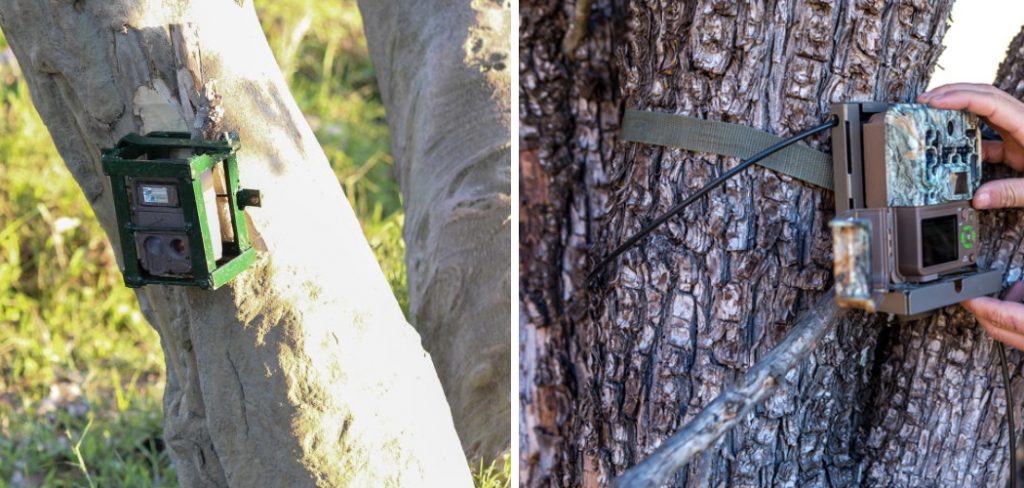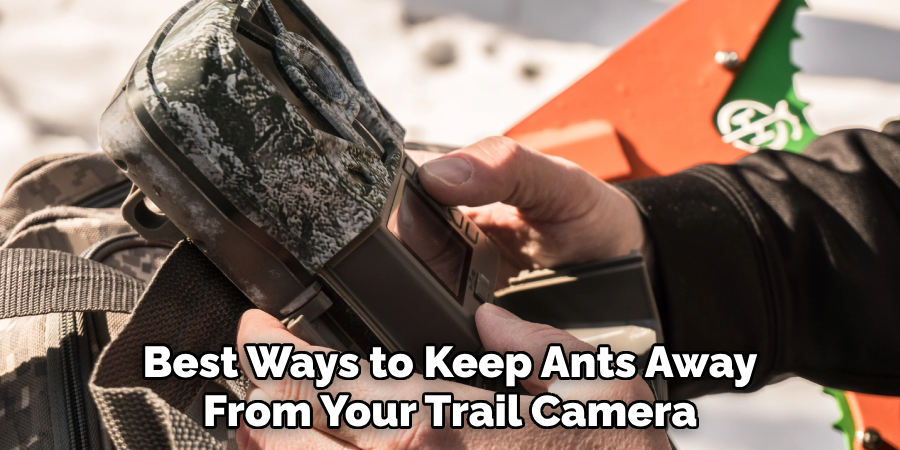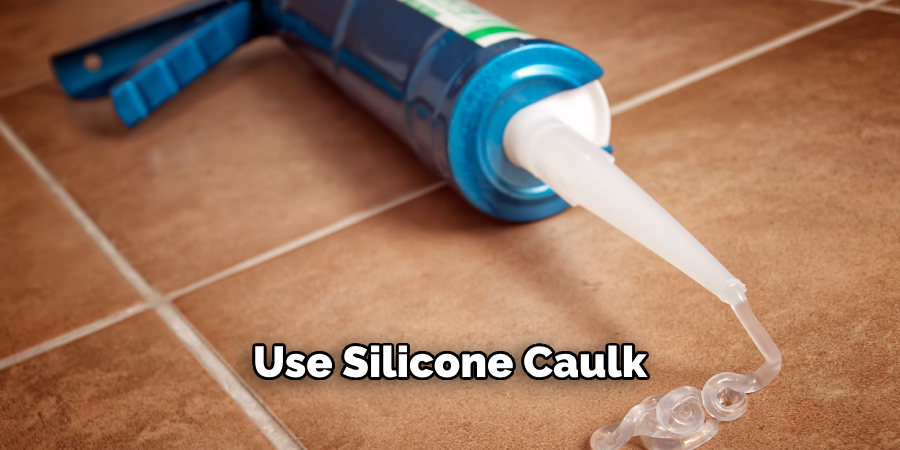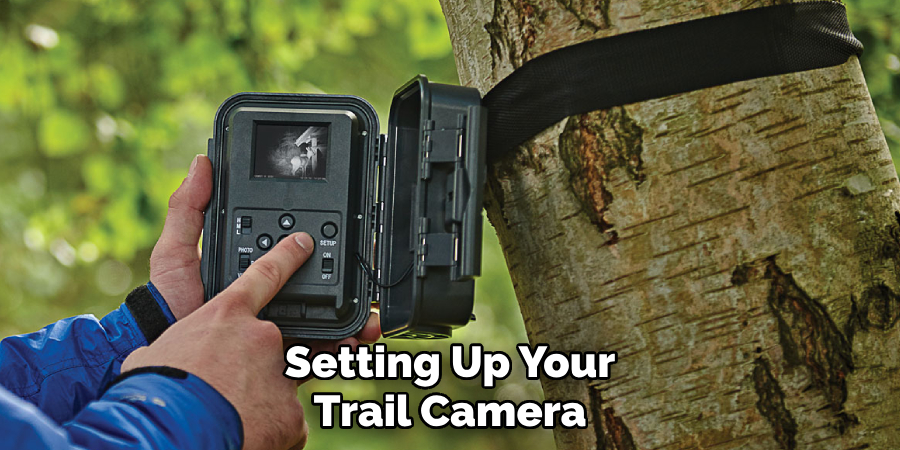For outdoor enthusiasts and wildlife enthusiasts alike, trail cameras are indispensable tools for capturing candid glimpses of nature’s wonders. However, a persistent challenge often arises: the invasion of ants.

These tiny yet tenacious creatures can wreak havoc on trail cameras, infiltrating delicate mechanisms and compromising their functionality. Protecting your investment and ensuring the longevity of your trail camera requires a proactive approach to keep ants at bay.
In this article, we explore how to keep ants out of trail cameras. From strategic placement and natural deterrents to innovative DIY solutions, understanding how to deter and repel ants effectively will not only preserve the integrity of your equipment but also allow you to continue capturing the beauty of the wild without unwelcome interference.
Issue of Ants Interfering with Trail Cameras
Ants are a common nuisance when it comes to setting up trail cameras. These small insects can easily infiltrate and cause damage to your equipment, making it difficult to capture clear images or videos of wildlife. Ants are attracted to the warmth and humidity that is emitted from the camera, as well as any food particles or debris left behind by animals.
Not only do ants pose a threat to your equipment, but they can also trigger false motion detections and drain the battery life of your trail camera. This can result in missed opportunities to capture important footage and could potentially cause extra expenses in replacing batteries.
The good news is that there are simple steps you can take to keep ants out of your trail cameras. By implementing these precautions, you can ensure that your equipment remains in good condition and continues to effectively capture wildlife activity.
10 Methods How to Keep Ants Out of Trail Cameras
1. Place Trail Cameras in an Open Area
One of the best ways to keep ants away from your trail camera is to place it in an open area where there are no trees or shrubs nearby. This will help reduce the number of ants that can get to your camera, as they will be less likely to find a path up to the camera if there are no obstacles blocking their way.

Additionally, make sure that your camera is not placed too close to any ant nests or colonies, as this could attract even more ants.
2. Use Baits and Traps
Baits and traps can be used to help control the ant population near your trail camera. There are several different types of baits and traps available on the market today, including sticky traps, liquid baits, and granular baits. These products work by attracting ants with a sweet scent and then trapping them when they come into contact with the bait or trap.
3. Spray Ant Repellents
Antrepellents are another effective way to keep ants away from your trail camera. These products typically contain ingredients such as peppermint oil or citronella oil, which have been known to naturally repel ants. Simply spray the repellent around your trail camera and reapply it every few weeks for maximum effectiveness.
4. Seal Up Any Cracks or Holes
Another good way to keep ants out of your trail camera is to make sure that any cracks or holes in its casing are sealed up tightly. Ants can easily squeeze through tiny gaps in order to gain access inside the camera, so it’s important that these areas are properly sealed off before setting up your trail cam. You can use silicone caulk or expanding foam insulation for this purpose.

5. Keep Your Camera Clean
Keeping your trail camera clean is also important if you want to prevent ants from getting inside of it. Make sure that you regularly wipe down the outside of the camera with a damp cloth in order to remove any dirt or debris that might attract ants and other pests.
Additionally, check for any food residue inside of the camera’s housing that could also be attracting insects and dispose of it properly if found.
6. Use Essential Oils
Essential oils such as peppermint oil and tea tree oil can also be used as natural ant repellents around your trail cameras. Simply mix a few drops of essential oil with water in a spray bottle and then spray it around your cameras every few weeks for maximum effectiveness against unwanted pests such as ants.
Just make sure not to spray directly onto any electrical components on the outside of the camera, as this could damage them.
7. Put Out Cinnamon Sticks
Cinnamon sticks are another great natural deterrent for keeping ants away from your trail cameras. The strong smell of cinnamon has been known to repel many types of insects, including ants. Place a few cinnamon sticks near each one of your cameras, making sure they aren’t too close so they don’t interfere with its operation. Replace them every month or so for the best results.
8. Keep Food Sources Away From Cameras
Ants are attracted by food sources, so make sure there isn’t anything edible near your cameras that could draw them in. If you’re using peanut butter as bait, make sure it’s far enough away from each one so that it won’t attract unwanted visitors while still being close enough for animals like deer or wild hogs who might trigger its motion sensor.
9. Utilize Diatomaceous Earth
Diatomaceous earth ( DE ) is a powder made up of microscopic particles that have sharp edges that can cut through an insect’s exoskeleton, killing them instantly upon contact.
Sprinkle some diatomaceous earth around each one of your cameras in order to create an invisible barrier against unwelcome guests such as ants. Just be careful when handling DE since inhaling its dust particles can be harmful if done excessively over time.
10. Encircle With Petroleum Jelly
Petroleum jelly is another great tool for keeping pesky insects like ants away from your trail cameras. Simply spread some petroleum jelly around each one’s base, creating an impenetrable barrier against unwanted intruders trying to enter its housing unit via small cracks or holes in its casing.
Make sure you replace this barrier every few months though, since petroleum jelly does eventually wear off over time due to exposure to the elements.

Factors Contributing to Ant Infestation
Apart from learning how to keep ants out of trail cameras, it is also important to understand the factors that contribute to ant infestation in the first place. Knowing these factors can help prevent future ant problems and ensure that your trail camera stays ant-free.
One of the major contributing factors to ant infestation is the location of the trail camera. Ants are attracted to warm, damp and dark environments, making trail cameras a perfect spot for them to build their nests. Placing the camera near trees or shrubs can also make it more susceptible to ant infestation as these insects use plants as highways to move around.
Another factor is the type of food present in the area. Ants are drawn to sweet and sugary substances, making food remnants or spilled drinks a major attraction for them. This is especially true for trail cameras that are left out in the wilderness where there may be a variety of food sources available.
Things to Consider When Setting Up a Trail Camera
When setting up trail cameras, it is important to take into consideration several factors that can affect their performance and longevity. Here are some things to keep in mind:
Location
The location of your trail camera will greatly impact the types of wildlife you capture on film. It is best to place your camera near areas with high animal activity such as game trails, watering holes, or food sources.
Height
When setting up your trail camera, it is important to place it at the right height. Ideally, the camera should be placed at about waist level in order to get a clear view of animals passing by. If the camera is too low, it may capture only the legs of larger animals and miss smaller animals entirely.

Direction
The direction in which your trail camera is facing is also crucial. It should be pointed perpendicular to the path of animals, rather than directly down the path. This will give you a better view of animals as they approach and pass by the camera.
Conclusion
After careful consideration, it’s clear that the best way to keep ants out of trail cameras is prevention. It’s essential to inspect camera locations regularly and use deterrents before setting them up. You’ll want to check the area for ant colonies and apply insect repellent wipes. Utilizing Vaseline, oil-based creams, soap bars, fabric softener sheets, and a chemical pesticide may also help with your efforts in preventing ants near your camera.
Although ants may seem rather harmless, they can cause confusion for trail cameras which can ultimately impede their usage and effectiveness. Therefore, if you’re looking to protect your equipment from potential infestation then be sure you take preventative action now or else you will have costly results in the long run! Knowing how to keep ants out of trail cameras has never been easier with these tips!
About
Safety Fic is a distinguished figure in the world of Diy design, with a decade of expertise creating innovative and sustainable Diy solutions. His professional focus lies in merging traditional craftsmanship with modern manufacturing techniques, fostering designs that are both practical and environmentally conscious. As the author of diy, Safety Fic delves into the art and science of Safety Fic-making, inspiring artisans and industry professionals alike.
Education RMIT University
(Melbourne, Australia) Associate Degree in Design (Safety Fic) Focus on sustainable design, industry-driven projects, and practical craftsmanship. Gained hands-on experience with traditional and digital manufacturing tools, such as CAD and CNC software.
Nottingham Trent University
(United Kingdom) Bachelor’s in diyfastly.com and Product Design (Honors) Specialized in product design with a focus on blending creativity with production techniques. Participated in industry projects, working with companies like John Lewis and Vitsoe to gain real-world insights.
Publications and Impact
In diy, Safety Fic his insights on indoor design processes, materials, and strategies for efficient production. His writing bridges the gap between artisan knowledge and modern industry needs, making it a must-read for both budding designers and seasoned professionals.
